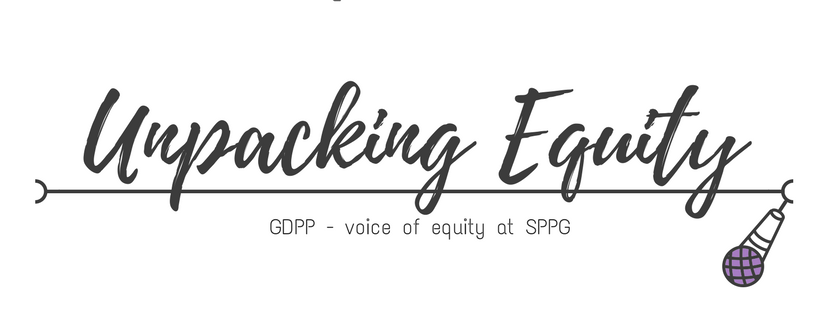 Recent public allegations of sexual misconduct by powerful Hollywood players, while not exactly surprising, have sparked an open conversation about gender equity in the media industry. There are far fewer women than men in decision-making roles in the media industry, and thus women are not given an equal voice in influencing the roles written for them and stories told about them. This isn’t just a Hollywood problem, women have unequal access to decision-making roles in the Canadian media industry as well. The question remains, how can policy change this?
Recent public allegations of sexual misconduct by powerful Hollywood players, while not exactly surprising, have sparked an open conversation about gender equity in the media industry. There are far fewer women than men in decision-making roles in the media industry, and thus women are not given an equal voice in influencing the roles written for them and stories told about them. This isn’t just a Hollywood problem, women have unequal access to decision-making roles in the Canadian media industry as well. The question remains, how can policy change this?
What’s the problem?
As explained in a previous Unpacking Equity article, “inequity is caused by differences in access to opportunities”. Although equal numbers of women and men graduate from film and television programs, only 17% of film and TV directors in Canada are women. For racialized minority women the inequity is even greater: in 2014 not a single television or feature film project funded by Telefilm Canada or the Canadian Media Fund employed a racialized woman as a director.
News media show similar inequities. In Canada, 28% of newspaper editors are women, 43% of reporters are women, and only 27% of news stories in traditional media focus on women.
Adding to this misery, or perhaps because of it, men receive more complex roles in TV and movies, and are more likely to report on news stories about politics and crime. Women are regularly portrayed as stereotypes in one-dimensional, supporting roles.
Subtle and overt discrimination has created a glass ceiling preventing women from obtaining decision-making positions in the media. By not including women in decision-making roles in media, we risk losing their stories and voices in the Canadian conversation, and perpetuating sexism in our cultural institutions.
Who’s responsible?
Multiple government agencies work with the media system in Canada. The Canadian Radio-television and Telecommunications Commission (CRTC) regulates broadcasting in Canada, through the Broadcasting Act. This Act states that “The Canadian broadcasting system should … through its programming and the employment opportunities arising of its operations, serve the needs and interests, and reflect the circumstances and aspirations, of Canadian men, women and children, including equal rights, the linguistic duality and multicultural and multiracial nature of Canadian society”.
However, the CRTC does not regulate new media, including content distributed through mobile devices and the Internet, newspapers, or magazines. This is a gaping hole in the policy landscape, leaving these mediums without gender equity requirements.
In the film industry, the National Film Board of Canada (NFB) is “Canada’s public film producer and distributor”. The NFB, an agency of the Canadian Heritage Department, aims “to provide new perspectives on Canada” through films. TeleFilm Canada, a Crown Corporation, “[develops and promotes] the Canadian audiovisual industry”.
What’s happening now?
The CRTC does not appear to have a strong plan to improve gender equity. However, other government agencies have been more proactive in addressing gender inequity by setting tangible and achievable objectives for the industry. TeleFilm Canada aims to achieve gender parity in its production funding by 2020, and the NFB has introduced a goal to have half of all productions directed by women, and half of all production spending given to films directed by women. To address the additional barriers faced by racialized women, TeleFilm Canada has also begun work to ensure that their films “better [reflect] cultural diversity and Indigenous communities” and the NFB has committed to making space for “women of all backgrounds”, in addition to its Indigenous Action Plan.
Much of the movement towards improving gender equity in the larger Canadian media landscape has been led by advocates within the industry. For example, Advertising Standards Canada (ASC) administers the Gender Portrayal Guidelines and the Canadian Broadcast Standards Council (CBSC) administers the Canadian Association of Broadcasters’ Equitable Portrayal Code (2008). In the not-for-profit sector, Women in View and MediaSmarts are two organizations working to create change by raising awareness, monitoring the industry, and running programs to promote women in the industry.
What more can be done?
A 2017 study by the Canadian Media Producers Association suggests a number of solutions to improving gender equity in Canadian media. These include releasing more data related to gender, supporting diversity within gender, and inclusion initiatives. Creating a platform that outlines all resources for women in the media industry, similar to the Sundance Resource Map for Women Filmmakers, would also be a big step forward, in addition to including new media and newspapers in the Broadcasting Act.
Gender equity in the media is a complex, pervasive issue that won’t be dealt with quickly or easily. Keeping gender equity awareness high and creating pathways for women to reach decision-making positions in the media industry are big steps forward.
—
Rebecca Dyck is a 2nd year MPP student at the School of Public Policy and Governance. She holds a BES from the University of Waterloo and has completed internships with the Ontario Ministries of Economic Development and Innovation and Advanced Education and Skills Development. Her daily reads include the iPolitics Morning Brief and LaineyGossip. Rebecca is currently on exchange in Berlin, Germany studying at the Hertie School of Governance.